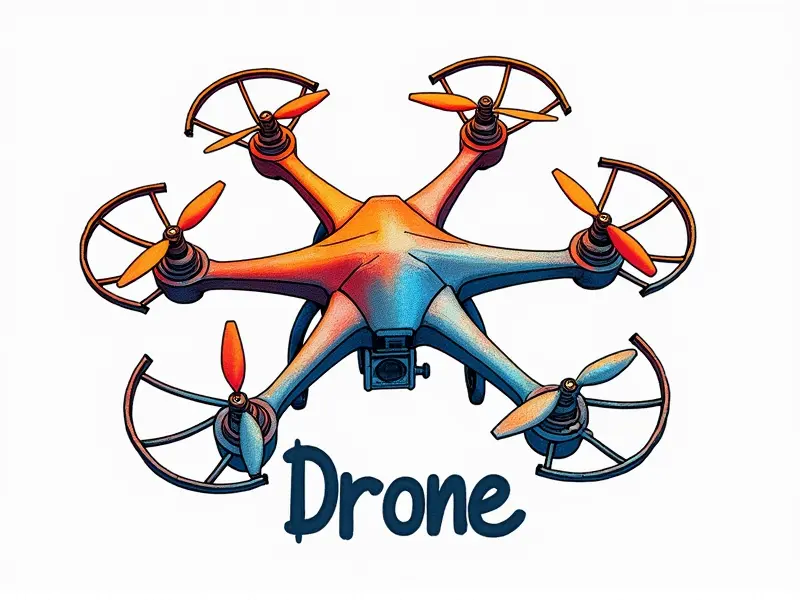What is FPV racing drone?

Why FPV Drones Are Popular
FPV (First Person View) racing drones have gained immense popularity among hobbyists and enthusiasts due to their unique blend of technology, speed, and excitement. These miniature aircraft offer a thrilling experience that is unmatched by traditional RC models. The ability to see the world from the drone's perspective through a live video feed creates an immersive flying experience akin to being in a cockpit.
One of the key reasons for FPV drones' popularity is their versatility. They can be flown indoors and outdoors, making them accessible year-round regardless of weather conditions. Additionally, advancements in technology have made these drones more affordable and easier to assemble, attracting beginners and seasoned pilots alike.
Beginner's Guide to FPV Drones
If you're new to the world of FPV racing drones, it can be overwhelming to know where to start. This beginner’s guide will help you understand the basics and get started with your own FPV drone setup.
- Understand the Basics: Before diving into building or purchasing an FPV drone, familiarize yourself with essential components such as flight controllers, motors, propellers, and video transmitters. Each part plays a crucial role in the performance of your drone.
- Select Your Components Wisely: Choose high-quality parts that suit your budget and flying style. Consider factors like weight, durability, and compatibility when selecting components.
- Learn to Assemble: Building an FPV drone from scratch can be a rewarding experience. Follow detailed tutorials online or join local hobby groups for guidance on assembly techniques.
FPV Drone Racing Explained
FPV racing involves flying drones at high speeds through challenging courses while viewing the action in real-time via a video feed. This sport combines elements of aerobatics, strategy, and technical skill, making it both exhilarating and competitive.
The objective is to navigate through gates or obstacles as quickly as possible without crashing. Pilots must maintain control over their drones even at high speeds, requiring quick reflexes and precise maneuvering skills.
How Does FPV Drone Work?
An FPV drone operates using a combination of hardware and software components that work together to provide an immersive flying experience:
- Flight Controller (FC): The brain of the drone, responsible for processing sensor data and controlling motor speeds.
- Motors & Propellers: Provide thrust and control over movement.
- Battery: Supplies power to all components.
- Video Transmitter (VTX): Sends live video feed from the drone's camera to a receiver on the ground.
- Goggles or Monitor: Displays the video feed, allowing pilots to see what the drone sees in real-time.
Setting Up Your First FPV Drone
Setting up your first FPV drone involves several steps. Here’s a basic guide to help you get started:
- Select Components: Choose the right flight controller, motors, propellers, and other essential parts.
- Assemble Frame: Construct your frame according to the chosen components.
- Install Electronics: Mount the flight controller, ESCs (Electronic Speed Controllers), battery, and VTX.
- Connect Components: Wire everything together carefully following diagrams or tutorials.
- Calibrate & Test: Calibrate your drone’s sensors and test it in a safe environment before taking it out for real flights.
Best FPV Cameras for Drones
Selecting the right camera is crucial for an optimal FPV experience. Here are some top choices:
- TBS Unify Pro X: Offers excellent image quality and reliability.
- Runcam Swift 2: Compact design with high frame rates and resolution.
- Holybro O3 Camera: Affordable option with good performance.
Understanding FPV Racing Drones
FPV racing drones are specifically designed for speed and agility. They typically feature lightweight frames, powerful motors, and advanced flight controllers to handle high-speed maneuvers. These drones are built to withstand crashes and provide a smooth video feed even at extreme angles.
The Basics of FPV Racing
FPV racing involves flying through pre-set courses while viewing the action in real-time via goggles or monitors. Pilots must navigate tight turns, steep climbs, and descents with precision to achieve the fastest lap times.
- Course Layout: Courses are designed with various obstacles and gates to challenge pilots' skills.
- Pilot Skills: Quick reflexes, spatial awareness, and technical knowledge of drone setup are essential.
- Safety Measures: Proper safety gear like helmets and protective goggles is mandatory during races.
Getting Started with FPV Racing
To get started with FPV racing, follow these steps:
- Build Your Drone: Construct a reliable and fast drone suitable for racing.
- Practice Flying: Gain experience by practicing in open areas before joining races.
- Join Local Clubs: Connect with other FPV enthusiasts to learn tips and participate in events.
FPV Drone Racing Gear List
To compete effectively, you'll need the following gear:
- Drones: High-performance racing drones equipped for speed and agility.
- Goggles or Monitors: For viewing live video feed during races.
- Batteries & Chargers: Essential for powering your drone and maintaining performance.
- Spare Parts: Keep a stock of common replacement parts like propellers, motors, etc.
Exploring FPV Racing Technology
The technology behind FPV racing is constantly evolving. Innovations in battery life, camera quality, and flight control systems continue to push the boundaries of what’s possible with these miniature aircraft. As new advancements are made, pilots can expect even more thrilling experiences and competitive challenges.
Conclusion
FPV racing drones offer an unparalleled blend of technology, speed, and excitement that continues to captivate enthusiasts worldwide. Whether you're a beginner looking to build your first drone or an experienced pilot seeking the latest gear, there's always something new and exciting in the world of FPV racing.

